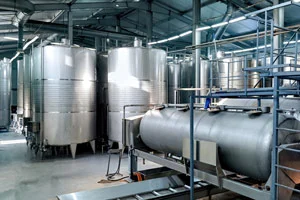To obtain wines with a lower percentage of alcohol, the simplest approach would be an earlier harvest of the grapes. However, this has implications for the wine composition and quality, due to the lack of phenolic maturity that these grapes may present.
A technological innovation that could help in this situation would be the use of ultrasound in wineries, as examined by the study carried out by María Pilar Martínez-Pérez, Ana Belén Bautista-Ortín, Paula Pérez-Porras, Encarna Gómez-Plaza, members of the Department of Food Science and Technology of the University of Murcia, and Ricardo Jurado, the Agrovin Technical Director.
Grapes were harvested with two different ripening levels (25.4 °Brix and 29 °Brix), transported to the winery, and vinified. Also, a large-scale high-power ultrasound system was used to treat part of the less mature grapes just after crushing. These grapes were also vinified. The three different vinifications were skin-macerated for 7 days. The wine aroma compounds and physicochemical, chromatic, and sensory characteristics were analysed at the time of bottling.
The resulting wine made with the ultrasound-treated grapes showed very similar characteristics to the wine made with the more mature grapes, especially regarding total phenol and tannin content, but with an alcohol content 15% lower than the latter. This indicates that this technology could be applied to grapes to favour the extraction of grape phenolic compounds, even when grape phenolic maturity is not complete, allowing the production of quality wines with a reduced alcohol content.
The complete study can be found here.

